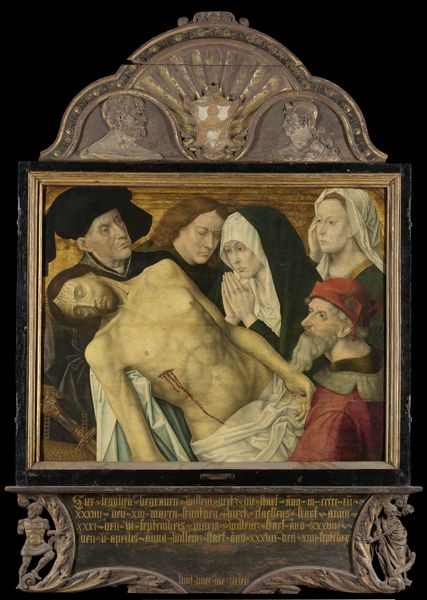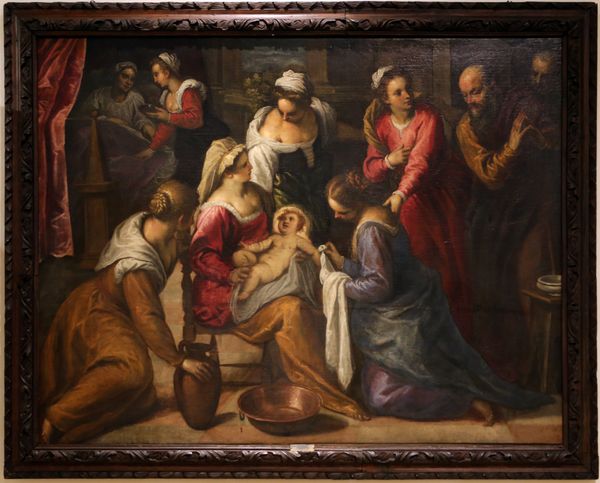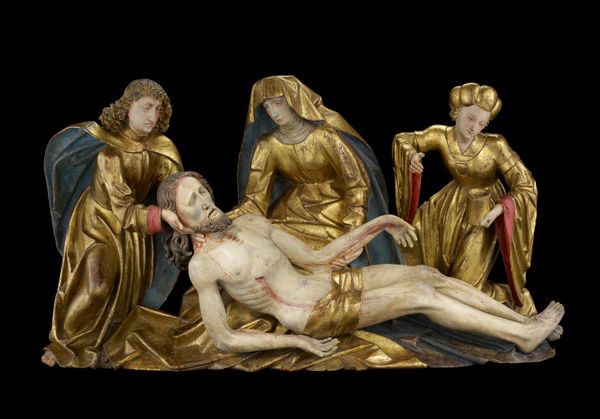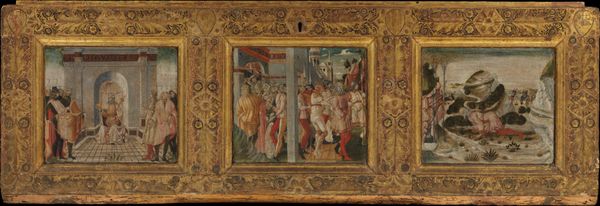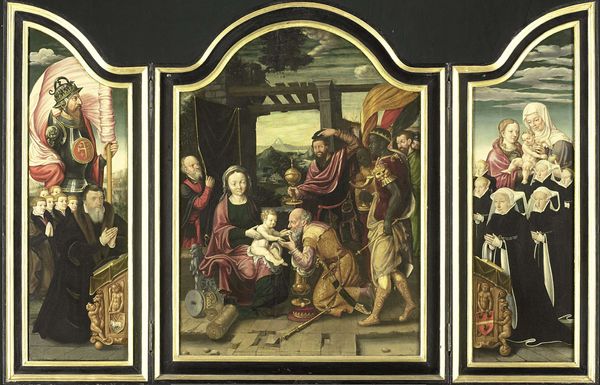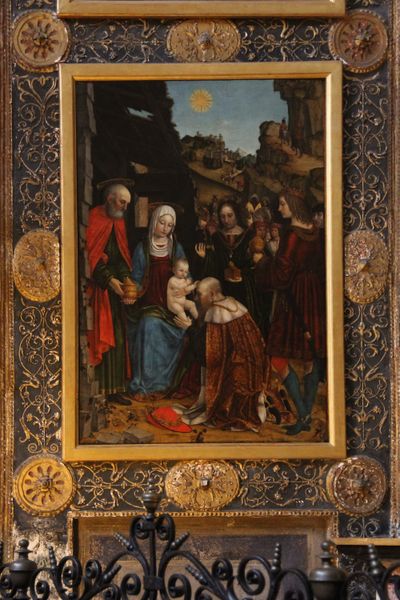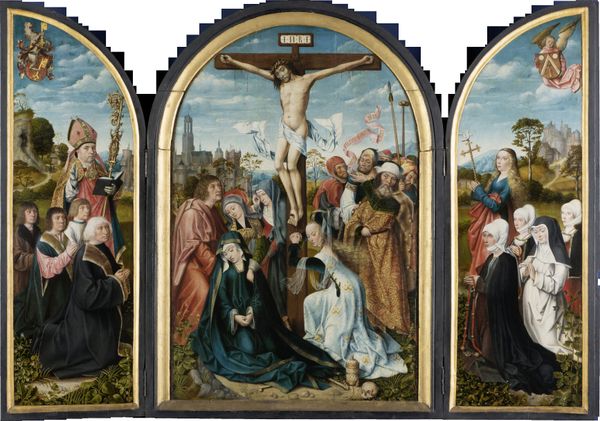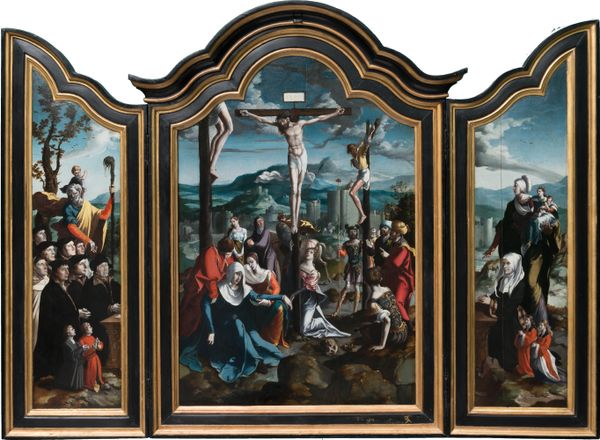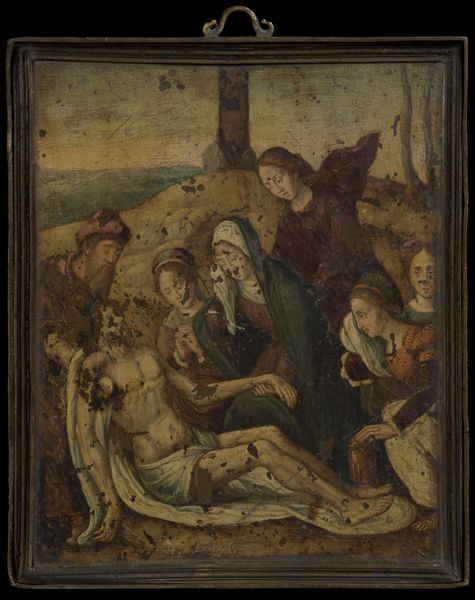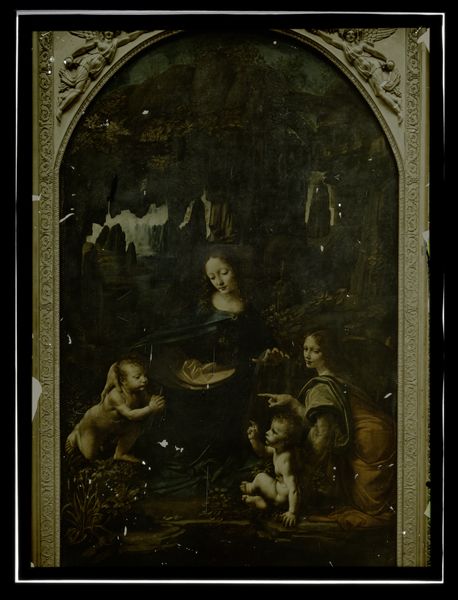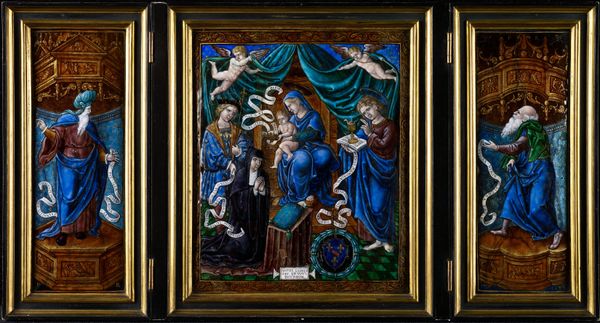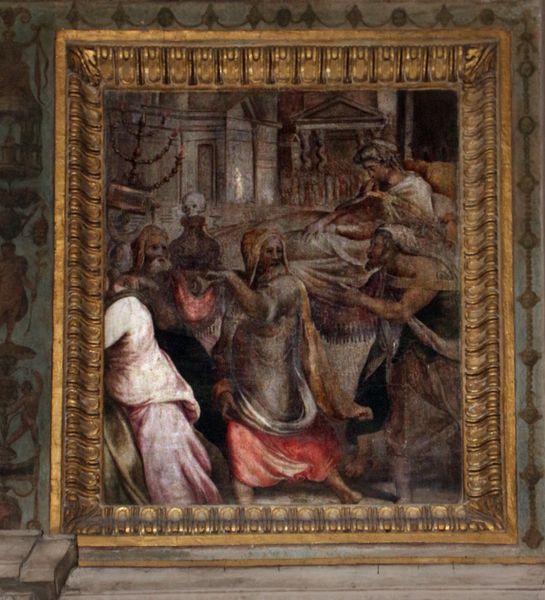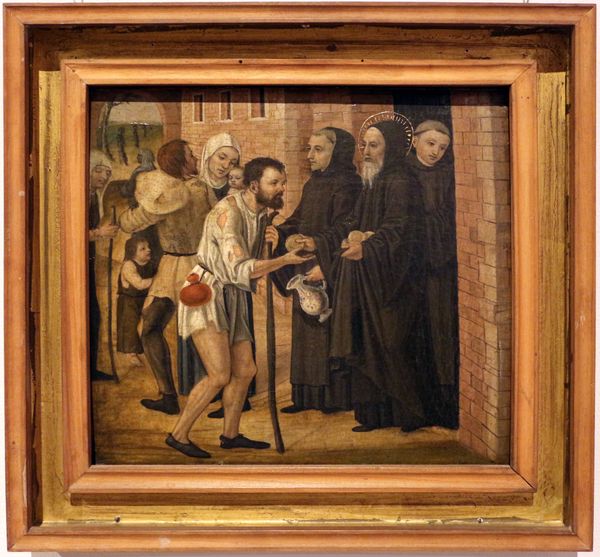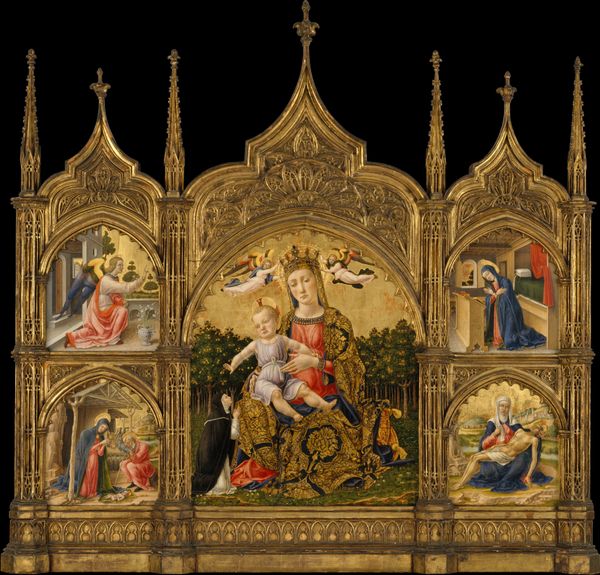
Memorial Triptych, formerly called the Gertz Memorial Triptych, with the Lamentation (central panel), nine male Donor Portraits with Saint John the Evangelist (left wing, inner), nine female Donor Portraits with the Virgin and Child (right wing, inner), Saint Peter (left wing, outer) and Saint Mary Magdalene (right wing, outer) after 1527
0:00
0:00
panel, painting
#
portrait
#
panel
#
painting
#
group-portraits
#
history-painting
#
northern-renaissance
Dimensions: support height 84 cm, support width 105.3 cm, support height 86 cm, support width 46 cm, support height 86 cm, support width 46 cm, height 177 cm, width 246 cm, depth 6.5 cm
Copyright: Rijks Museum: Open Domain
Curator: Here we have the "Memorial Triptych," completed after 1527 and originally named the Gertz Memorial Triptych. Its three panels offer a complex scene centered on the Lamentation, attributed to Hugo van der Goes and crafted on wood panels. Editor: My immediate impression is one of profound sadness, of course, amplified by the sheer detail of the suffering Christ in the center, almost tactile against the severe formalism of the donor portraits on either side. Curator: Precisely. Look closely at those panels. Notice the men flanking Saint John on the left, and the women and child alongside the Virgin on the right. They're not just observers; they're incorporated into the sacred narrative through their portraiture. The use of painting on panel suggests a level of intended durability and preciousness, highlighting its cultural significance as a public commemorative work. Editor: A deliberate choice. The rigid posture of the donors and the individualized attention to detail would certainly underscore the power and prominence of these individuals in the public sphere. And what about the triptych format itself? How does this three-part structure enhance or perhaps even dictate the visual experience, and thus the politics of imagery being presented? Curator: It does more than just enhance it; it contextualizes it! This wasn’t merely art; it was a didactic tool used by religious and secular powers to communicate messages. The portability of this multi-paneled object, the precious materials of oil and panel used— all points toward a very different means of image production and reception. Editor: It is quite thought-provoking how this memorial weaves together religious narrative with earthly power. Considering it through both an institutional and social lens gives it a renewed sense of cultural purpose that would resonate so powerfully at the time. Curator: Agreed. And analyzing it this way helps to understand better not just *what* we see but *why* we are meant to see it in this particular way. Editor: Exactly. Looking at art through its materials and social dimensions always offers fresh interpretations and reminds us that its essence lies not just in artistry but the story of its making, preservation, and impact.
Comments
No comments
Be the first to comment and join the conversation on the ultimate creative platform.
